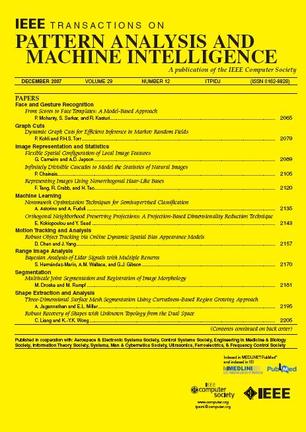VolGen:三维物体生成的体积潜在扩散模型。
IF 18.6
1区 计算机科学
Q1 COMPUTER SCIENCE, ARTIFICIAL INTELLIGENCE
IEEE Transactions on Pattern Analysis and Machine Intelligence
Pub Date : 2025-08-04
DOI:10.1109/tpami.2025.3594029
引用次数: 0
摘要
我们建议将2D潜在扩散模型,众所周知,从稳定扩散系列,扩展到三维对象生成的体积潜在扩散模型。具体来说,我们首先训练一个体积变分自动编码器(VVAE)将3D占用网格压缩到潜在空间中,该空间将$512^{3}$占用网格压缩到$32^{3}$潜在代码中。然后,我们在这个潜在空间上训练一个扩散模型,利用3D卷积和交叉注意层进行图像调节。这种体积潜在扩散模型(VLDM)从单视图图像输入生成精确和光滑的网格表面,并在大约10秒的推理过程中很好地推广到未见过的域。我们的关键见解是,一个简单的基于体积的潜在扩散模型也可以很好地执行3D生成任务,而不依赖于稀疏表示(如点云)或3D特定技术(如三平面神经辐射场(NeRF))。大量的实验证明了我们的潜在扩散模型在三维领域的有效性,为三维生成任务指明了一个有希望的方向。本文章由计算机程序翻译,如有差异,请以英文原文为准。
VolGen: Volumetric Latent Diffusion Models for 3D Object Generation.
We propose to extend 2D latent diffusion models, well known from the Stable-Diffusion series, to volumetric latent diffusion models for 3D object generation. Specifically, we first train a Volumetric Variational Auto-Encoder (VVAE) to compress 3D occupancy grids into a latent space, which compresses the $512^{3}$ occupancy grid into a $32^{3}$ latent code. We then train a diffusion model on this latent space, utilizing 3D convolutions and cross-attention layers for image conditioning. This Volumetric Latent Diffusion Model (VLDM) generates accurate and smooth mesh surfaces from single-view image inputs, and generalizes well to unseen domains during inference in around 10 seconds. Our key insight is that a simple volume-based latent diffusion model can also perform well for 3D generation tasks, without relying on sparse representations like point clouds or 3D specific techniques like triplane Neural Radiance Fields (NeRF). Extensive experiments demonstrate the effectiveness of our latent diffusion models in the 3D domain, indicating a promising direction for 3D generation tasks.
求助全文
通过发布文献求助,成功后即可免费获取论文全文。
去求助
来源期刊
CiteScore
28.40
自引率
3.00%
发文量
885
审稿时长
8.5 months
期刊介绍:
The IEEE Transactions on Pattern Analysis and Machine Intelligence publishes articles on all traditional areas of computer vision and image understanding, all traditional areas of pattern analysis and recognition, and selected areas of machine intelligence, with a particular emphasis on machine learning for pattern analysis. Areas such as techniques for visual search, document and handwriting analysis, medical image analysis, video and image sequence analysis, content-based retrieval of image and video, face and gesture recognition and relevant specialized hardware and/or software architectures are also covered.

 求助内容:
求助内容: 应助结果提醒方式:
应助结果提醒方式:


